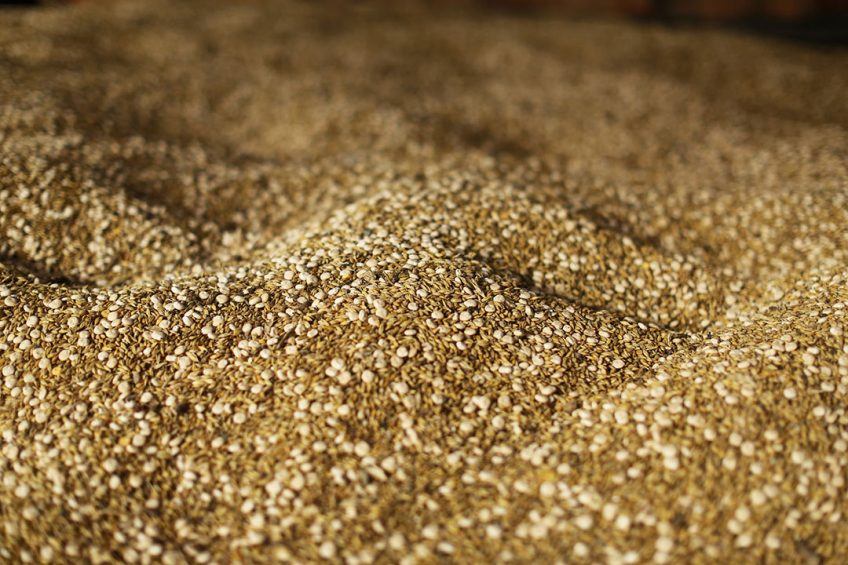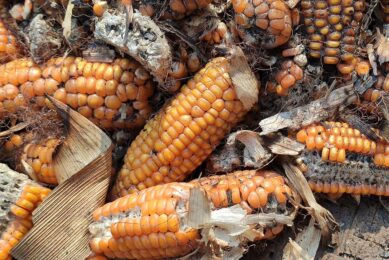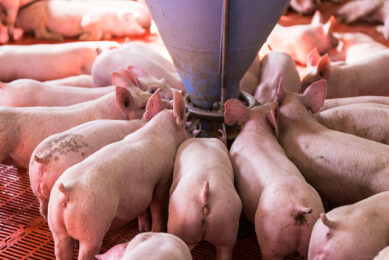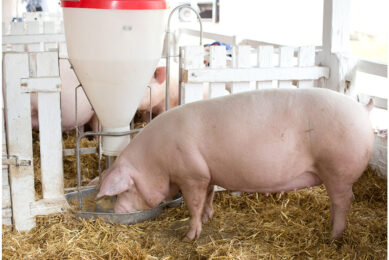Determining the efficacy of mycotoxin mitigators: In vitro vs In vivo

Commercial marketing of feed additives to prevent mycotoxicosis began about 40 years ago and is now a major industry. However, the challenge for suppliers has been proving product efficacy. Most methodology includes in vitro binding assays with individual purified mycotoxins, but extrapolating in vitro results to actual field conditions may not prove accurate. As a result, a more accurate method for testing product efficiency may be through in vivo studies.
Most methodology includes in vitro binding assays with individual purified mycotoxins, but extrapolating in vitro results to actual field conditions may not prove accurate. As a result, a more accurate method for testing product efficiency may be through in vivo studies.
In vitro methodology
In vitro binding is the most commonly used methodology for investigating product efficacy. Such tests usually involve incubation of a single purified mycotoxin with a product under controlled conditions of temperature, pH and time. The major advantages of such in vitro techniques are their low cost and rapidity. It is difficult, however, to extrapolate such data to commercial field conditions, where many variables can influence efficacy. One factor impacting the binding of mycotoxins in the digestive tract is pH. The pH of the intestine varies greatly as ingesta passes from the mouth to the stomach, or rumen, and on to the small and large intestines. Fixed solutions used in vitro cannot accurately mimic such pH changes. Transit time required to move material through the intestine may also be lacking.
Multiple mycotoxins
Another challenge for simple in vitro tests are multiple mycotoxins. The relative amounts and chemical nature of co-contaminants may alter the ability of mycotoxin mitigators to adsorb a given mycotoxin. Survey data by LC-MS/MS from Alltech’s 37+ analytical laboratory shows a high frequency of co-contamination with an average of 6.1 mycotoxins in complete rations (2019 Q1/Q2, n = 1490). These compounds include parent mycotoxins, isomers, conjugated and emerging mycotoxins, and storage mycotoxins.
Exaggerate response in animals
The importance of multiple mycotoxins is supported by the research of Andretta et al. (2016), who conducted a meta-analysis of 85 published studies feeding mycotoxin-contaminated diets to growing pigs. Diets with individual mycotoxins reduced feed intake and weight gain by 14% and 17% respectively while feeding diets containing multiple mycotoxins reduced feed intake and weight gain by 42% and 45% respectively. Such multiple contaminations indicate additive and synergistic effects that could exaggerate the response in animals compared to that expected with individual mycotoxins. The presence of emerging and conjugated mycotoxins can further increase these negative effects. In vitro techniques often do not address multiple or varied forms of mycotoxins, but their presence may result in altered conclusions with respect to binding efficiency.
In vivo methodology
In vivo methodology involves the feeding of contaminated diets to animals and measuring specific and non-specific parameters. Early studies included the feeding of purified mycotoxins, but it is now clear that this work represented an oversimplification because of the lack of co-contaminants, conjugated or emerging mycotoxins. The most valid method is thus the feeding of naturally contaminated feedstuffs that accurately mimic commercial conditions.
In vivo trials
In vivo trials account for conditions beyond dietary mycotoxin contamination, including digestion, production environment, hygiene status and management practices, which are relevant to production efficiency. As such, in vivo trials remain the only way to truly mimic the response of an animal to a mycotoxin challenge or mitigation product.
Studies of Diaz et al
An interesting example of the difference between extrapolating in vitro binding data to in vivo situations are the studies of Diaz et al. (2002, 2004). In the in vitro study, the authors measured aflatoxin binding by activated charcoals, sodium bentonites, calcium bentonite and a yeast cell wall product (Mycosorb, Alltech). All additives were statistically similar and bound over 97% of aflatoxin. In a subsequent in vivo study, the authors measured transfer of aflatoxin M1 into milk from dairy cows fed aflatoxin with the same additive products. In contrast to the in vitro trial, activated carbon had no effect on excretion of aflatoxin M1 into milk. Instead, the most effective mitigation agents were sodium bentonite (1.2% inclusion) and Mycosorb (0.05% inclusion).
Managing mycotoxins with Mycosorb
Hundreds of mycotoxin mitigation agents are commercially available. Producers are challenged to distinguish between the products that provide superior mitigation of mycotoxins and those that do not. Products that are supported by in vitro, ex vivo and, most importantly, in vivo trials should be a focus. Studies carried out over several decades indicate that the organic adsorbent Mycosorb can be added to contaminated feeds that allow mycotoxins to pass through the digestive tract without negative effects on animals. Mycosorb has been in the market for more than 20 years and its effectivity against multiple mycotoxins is well documented in over 150 peer-reviewed papers published in journals around the world. These trials cover the use of Mycosorb during many challenges with mycotoxins, including but not limited to aflatoxin, ochratoxin, deoxynivalenol, zearalenone, T2/HT2-toxins, fumonisins, ergot alkaloids, patulin, mycophenolic acid and gliotoxin.
Efficient use within the animal
The Mycosorb research database contains in vitro, ex vivo and in vivo trials. Knowledge of the chemical complex formed between product and mycotoxin is critical and often gained in-lab. In vitro, Mycosorb and mycotoxin interaction is stable and remains so over time and pH variation. However, most of the literature (over 103 papers) is comprised of in vivo research. Gut health, organ health, reproduction and performance can be supported with Mycosorb during mycotoxin challenges in many animal species, such as swine, poultry, ruminants and aqua. It is clear that the focus of Mycosorb is for efficient use within the animal, not a test tube.
Conclusions
In vitro methodology for determining mycotoxin mitigator efficiency has the advantage of simplicity, low costs and rapidity, but extrapolating to actual field conditions is too great to ensure accuracy. Variables such as multi-mycotoxins, digestive physiology and environmental factors are not considered with in vitro methodology. Thus, only in vivo studies utilising naturally-contaminated feedstuffs fed under commercial conditions can most accurately determine the potential efficacy of mycotoxin mitigators. The science behind Mycosorb fits these criteria for effective mycotoxin management. Mycotoxins are worth controlling; what do you have in your feed?
Authors: Dr Trevor K. Smith, Adjunct Professor, Dept. of Animal Biosciences, University of Guelph and Dr Alexandra Weaver, Alltech Mycotoxin Management
References available on request
 Beheer
Beheer





 WP Admin
WP Admin  Bewerk bericht
Bewerk bericht